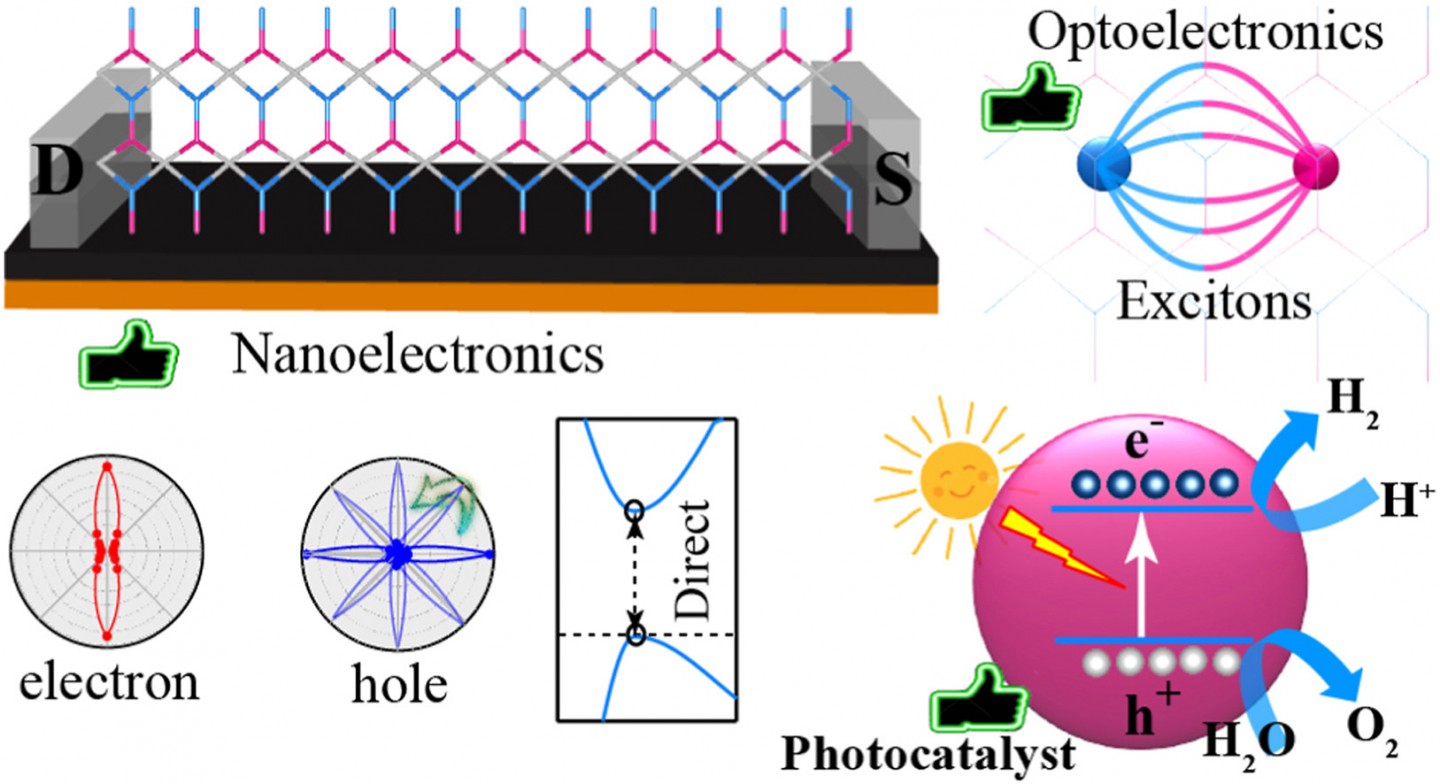Emerging Exotic Properties of Two-dimensional Ternary Tetrahexagonal BCN: Tunable Anisotropic Transport Properties with Huge Excitonic Effects for Nanoelectronics and Optoelectronics
-
Authors :
Mehmet Emin Kilic, Kwang-Ryeol Lee
-
Journal :
Materials Today Physics
-
Vol :
27
-
Page :
100792
-
Year :
2022

Abstract
A two-dimensional ternary tetrahexagonal BCN monolayer (th-BCN) is designed by applying Stone-Wales transformation to its pentagonal counterpart (p-BCN). Using first-principles calculations, we examine the dynamical, mechanical, thermal, and environment stability of th-BCN. The monolayer exhibits superior anisotropic electronic and optical properties compared to its counterparts (the domains of C and BN in the tetrahexagonal network and p-BCN). Direct band gap of 3.05 eV and excellent band edge alignment with the oxidation and reduction reactions of water heralds the use of th-BCN in photocatalytic water splitting. The band gap energy and band edge positions can be further adjusted by strain. The anisotropic high carrier mobility of th-BCN improves fast carrier separation and low recombination rate. The electronic transport direction can be easily controlled by strain engineering. For instance, one can rotate the preferred transport direction of hole by 90° with a very small uniaxial strain. Many-body effects beyond DFT reveal that the monolayer has strong light-harvesting capability (105cm−1) in the visible-ultraviolet region and exhibits strong excitonic effects with large excitonic binding energy of 0.98 eV. All these appealing properties make th-BCN a promising and tunable anisotropic 2D material for nanoelectronic and optoelectronic applications.
















